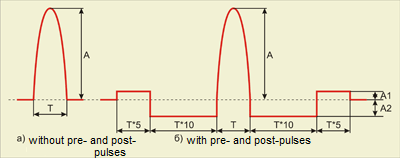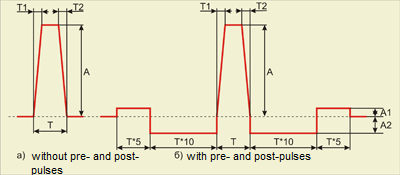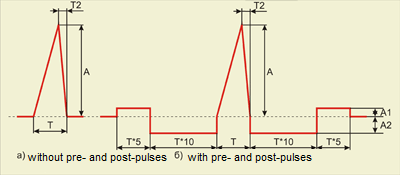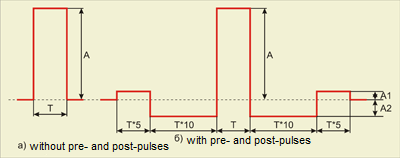Classical shock profile
Measuring equipment, communications-electronic equipment and other products that are exposed to single and multiple shocks in the course of usage and transportation should undergo tests for shock load resistance.
Shock loads resistance tests can be used to estimate sample product quality as well as its structural strength. The tests are performed by exposing the sample to single or multiple shocks with pre-set duration and peak velocity. Below you can see shock pulses shapes produced by the Software Shaker controller-Classical shock as well as the parameters set in the course of program setting.
Shock signals can be produced with pre- and post-shock pulses or without them. In the figure below T stands for shock duration and A for its amplitude. Duration as well as the amplitude of pre- and post-pulses exceeds the duration of shock pulses in 10 times. The trapezoidal signal has additional parameters such as rise and fall time of the signal (T1 and T2). The sawtooth signal has fall time option (T2).
Half-sine pulse is used to reproduce a shock occurring in the case of collision or a hard deceleration of a linear mobile system (for instance, in the case of elastic shock).


Trapezoidal pulse causes a higher response in broadband frequencies range if compared to a half-sine pulse. It is used to reproduce shock impacts similar to those occurring during hook jettison of a spaceship. This type of pulse is generally used for various types of equipment.
Terminal-peak sawtooth pulse has a more even spectrum if compared to half-sine or trapezoidal pulse.


Rectangular pulse is a particular case of trapezoidal pulse.
Triangular pulse is a particular case of sawtooth pulse.

